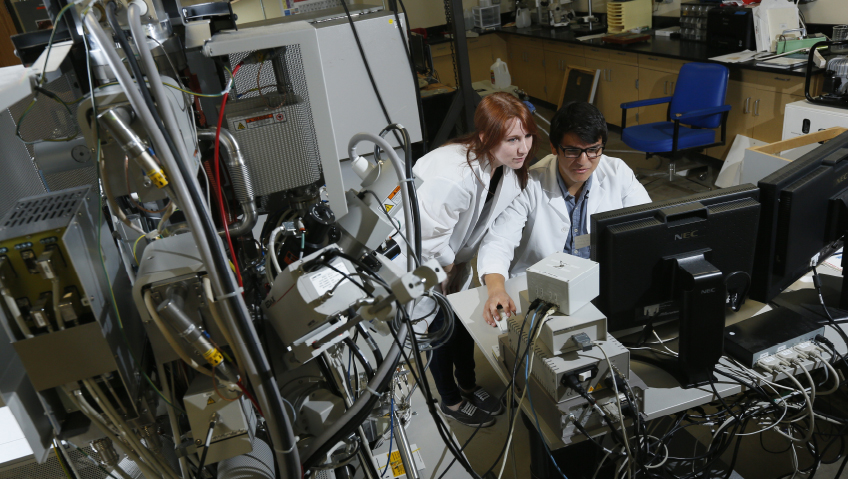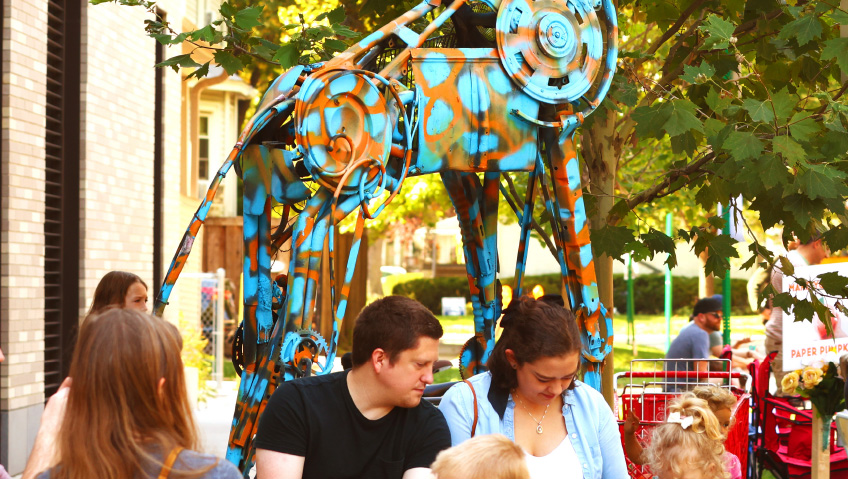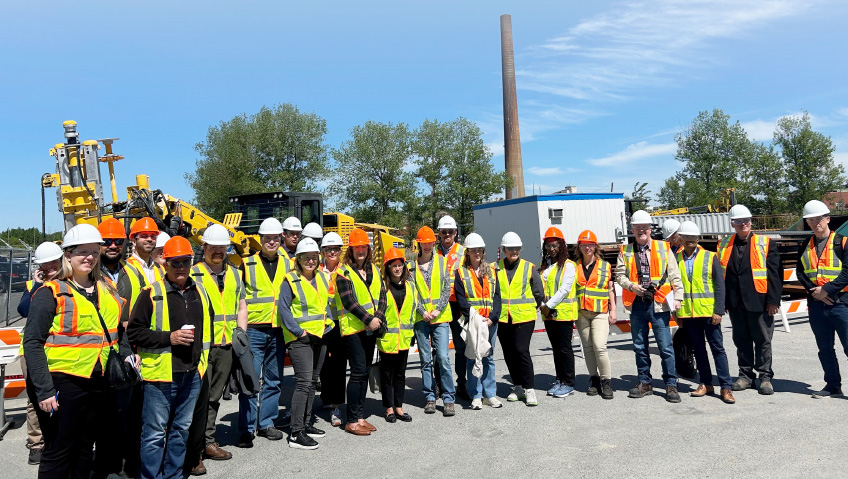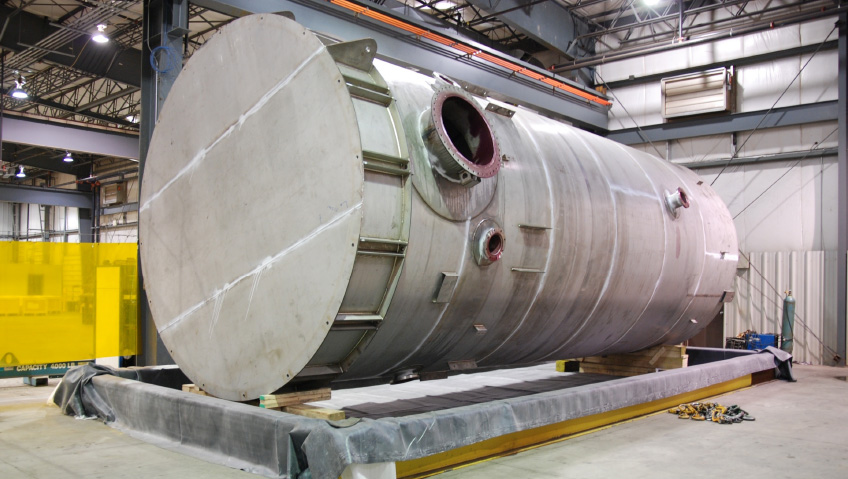Got an innovative organization? These San Marcos, Texas ingredients will set it up for growth: strategic location, skilled workforce, new recruit pipeline, affordable living amongst beautiful amenities. And how about the famously delicious pies, or crystal-clear rivers?
Welcome to the Texas Innovation Corridor, located deep in the heart of Texas. Here’s where economic developers take a strategic team approach, and where opportunity knocks.
There’s a new 1 million+ square foot Amazon SAT-6 facility and a Parallel (dba goodblend™ Texas) medical cannabis research and development campus coming soon. Urban Mining Company recycles rare earth elements from electronic waste like laptops and cellphones and re-purposes these vital components for manufacturing electric motors, robotics, and electric vehicles.
UTC Aerospace Systems makes super-light and strong components for the Boeing 787 and Airbus A350. And Texas State University, in the City of San Marcos, has established itself for next-generation materials science research as well as programs to expedite innovations to the marketplace.
Those are just a few examples of the economic vibrancy of the area and what’s to come.
“We are nestled right in between two amazing, growing cities – Austin and San Antonio,” says Jason Giulietti, President of the Greater San Marcos Partnership (GSMP), the economic development organization for Hays and Caldwell Counties. “Those are the great bookends in Central Texas and our region is right in that corridor.”
Texas Innovation Corridor
GSMP has its headquarters in the historic City of San Marcos. The region boasts plenty of farmland, wide open spaces, and a number of other growth-oriented cities, including Kyle (the Pie Capital of Texas) and Dripping Springs (the Wedding Capital of Texas) in Hays County, and Lockhart (the BBQ Capital of Texas) and Luling (the Watermelon Capital of Texas) in Caldwell County.
“We’ve become known as the Texas Innovation Corridor,” he says. “We want to be of the same ilk as Silicon Valley and the Research Triangle in North Carolina. We deserve to be in that space and are continuing to prove it every day with these companies calling us home.”
And when companies are scouting for a location with all the lifestyle perks, this is a very special part of Texas, Giulietti says.
“We’re on the edge of the Hill Country, so we’re in a beautifully aesthetic location of rolling hills and vibrant green trees. There are not many other parts of the state, or the country, where you can really just kick back, enjoy nature and still be within a quick shot of a major city to drive to.” Plus, the people are some of the friendliest you’ll ever meet.
Giulietti worked in Connecticut for the state’s business development team before relocating to San Marcos and was first introduced to the area on a business trip. He brought his family along to spend a few extra days in Texas and they found the warmth and charm irresistible.
They stopped at a Western outfitter store where they bought cowboy boots for the kids and chatted with the shop owner about the best local places to go. When they were in the car driving away, the guy came out running toward the car, waving them down.
“We were thinking, ‘What did we do? Forget a credit card? What happened?’ No, he came out to tell us about a place to check out in San Antonio with the kids. And I was like, ‘Oh my goodness, where are we?’” Giulietti says.
Nine months after that trip, he got a call from a recruiter about a job in economic development in San Marcos and they left their Connecticut home to “get down here as fast as we could,” he says.
Strategic direction
He joined the Partnership in Fall 2019, helping to bring jobs and investment to the area with the same strategic model he had spearheaded in Connecticut. (He’s a go-getter, previously selected as one of the top 40 under 40 by the Hartford Business Journal and Connecticut Magazine. In 2018, Consultant Connect named him one of the top 50 economic developers in the country.)
So, it shouldn’t come as a surprise that Giulietti has helped GSMP attract diverse industries and close more deals last year, despite the pandemic, than the team had in the past three years combined. Now, fiscal year 2021 could see double those results.
He attributes GSMP’s outstanding performance to strategic direction. Their playbook, Vision 2025, is a community effort that includes collaboration with 80-plus volunteers to help shape and define where they are going and how best to execute the tactics.
Input came from all sectors, including social services, business and the public. Vision 2025 keeps the team focused on its key principles of accountability and transparency, and GSMP establishes benchmarks to measure progress.
This team has volunteers working with all facets of business, from main street retailers to leaders assisting Amazon in locating its new facility. “Economic development is a team sport, for sure, like football,” Giulietti says.
His unique approach also includes private sector businesses he has recruited to highlight important resources and connections to attract new business.
Connections come to you
“We bring resources to the opportunities much earlier. Prospective businesses love it because they’re eventually going to need those connections and resources. For the ones who take advantage of it, their deals move 90 percent faster because the connections are made,” Giulietti says.
Case in point is Parallel’s medical marijuana production and research campus slated to open in 2022. The medical cannabis industry is highly regulated and complex to navigate. GSMP started working with the company 18 months ago, helping with every step from site selection search to funding.
“It was not a typical site selection because it couldn’t be near a school, for example, and certain other properties. We helped them partner up with our real estate partners to find the right location that also met the security requirements. The company has to be inspected by Texas Rangers on a regular basis, so it has to be hyper-secure.”
Securing financing for this non-traditional enterprise was also a challenge, so Giulietti and his team introduced local and national partners to find the capital needed to make the investment and roll it forward.
“We were able to help bring this project to closure and ultimately get them to build this massive campus right in San Marcos.”
The draw of a college town
Texas State University, the fifth-largest university in the state, has also been a huge draw for new business, supplying an educated workforce for innovative companies, and offering local youth a place to pursue post-secondary studies without leaving the area. The infusion of high-quality, innovative jobs is a win-win for companies and graduates.
The university also has a 58-acre site off-campus for science, technology and advanced research. The facility, known as STAR Park, also serves as a technology incubator for business start-ups, providing labs, conference rooms and office space.
“When we’re going out to attract new business, we can say, ‘look, your future workforce is already learning this in the school system.’ So, let’s make sure as you come here, we connect those dots and leverage those programs,” says Giulietti, outlining the advantages.
“It’s still affordable to live here. You can raise your family, you have great school systems and ultimately graduates will have a job. There’s a vibrancy in the youth that comes with a college town, but also opportunity. When kids graduate, there’s a place for them to go work.”
Another reason so many businesses are finding their way to San Marcos is speed. GSMP facilitates initiatives for developers to build what Giulietti calls “speculative property.” Essentially, developers build on greenfield sites without the promise of a tenant. Developers construct a building shell or envelope, then GSMP works to lure prospective tenants. Relocating businesses prefer to move quickly and have the building customized to suit their particular requirements.
“We need to push this gas pedal as hard as possible to feed this opportunity,” he says. “As we continue to grow the region, the Texas Innovation Corridor will be a destination for people and for companies to come locate.
“I want us to be recognized for that and then have some very clear-cut examples of the new economy as it evolves with electric vehicles, autonomous driving and alternative energy.”






